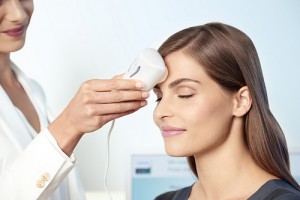Anti-Aging: The Trillion-Dollar Window
Frankly, the number is fairly mind-boggling. For a couple of years now, some analysts have been projecting the worldwide anti-aging market to grow to being worth one trillion dollars in sales – or more – by 2025.
Is it unduly optimistic? By any measure, anti-aging is on an upswing that’s impressive, as we’ve noted before. The category is set to expand at a CAGR of more than 7% in the next four years, according to some reports. Some of the key drivers being given the credit for this boom include…
- The soaring size of the aging population in the U.S. and many other areas of the increasingly-developed world economy.
- A rising number of people yearning to retain a youthful appearance, and now possessed of the means to pursue it.While soaring size of the ageing population continues to prompt the demand for
- Growing popularity for botulinium injection therapies, cosmetic surgeries and other medical procedures concerned with anti-aging.hile soaring size of the ageing population continues to prompt the demand for
- An increasing diversity and number of over-the-counter and at-shelf options for anti-aging personal care.
- The interest of millennials in premium skin care/anti-aging growth, as early adopters: 57% of them us anti-aging products daily, while another 28% use them at least weekly.
What the specific product areas where most of this growth will concentrate?
- Anti-wrinkle products dominate the global market, and should continue to do so.
- Hair color is in second place, and will keep on growing in the foreseeable future.
- Dermal fillers and hair restoration procedures are expected to see rapid increases, as treatment technologies advance..
In terms of devices, RF gadgets for skin tightening and other treatments own the biggest share of sales in that segment, estimated to be worth $1.6 billion already; anti-cellulite treatment devices are close behind and are expected to maintain heady growth.
The future for formulators
What’s this mean for formulators and product developers in personal care products? What are some of the areas where there’ll be demand for even greater innovation?UV Absorbers
- UV Absorbers will continue an area where inventiveness is vital; 52% of respondents to a recent Mintel report said they make a regular effort to use sunscreen and keep out of the sun to prevent skin cancer and signs of aging. Organic and inorganic UV absorbers are areas of intense research, as formulators try to develop products both effective and consumer-friendly.
- Natural products and ingredients are among the biggest, fastest-growing trends in all personal care categories, and anti-aging leads that charge. Again according to Mintel, 76% of respondents concerned with aging reported being interested in products with natural and organic ingredients. Natural oils such as argan, coconut, almond and more are getting more attention outside of just use in hair care, while olive oil, other vegetable oils and sunflower and shea butters, among others, are gaining ground. There’s a huge amount of innovation already underway, but the pressure to find even more solutions – while keeping the costs viable for manufacture – are on the rise, too.
- Multifunctional products that help consumers get more for their money will also be an important segment; products that contain antioxidants and hydrate get the highest level of interest from consumers nowadays, and that’s why formulators are tasked with delivering products that perform at least two functions, often even more. Maintaining the same aesthetics the consumer has grown to expect from a single-function product is just one of the challenges involved for formulators.
- Hair care anti-aging products are another new frontier for formulators, as the industry presses for products that guard against free radical damage and other threats to hair as we age. Anti-aging formulations are now being seen in shampoos, conditioners, volumizers, serums and more, and that trend will only continue to grow as manufacturers become more adept at preserving consumer-friendly look-and-feel with protective qualities.
It’s never been a more wide-open time in the industry. Formulating the products that will meet this rising demand will help brands and companies stake out new ground in a dynamic market, where the limits of growth seem beyond prediction right now. Innovation in anti-aging has never been more critical to success, and it’ll make all the difference in grabbing a slice of that trillion-dollar pie.

 In terms of devices,
In terms of devices,